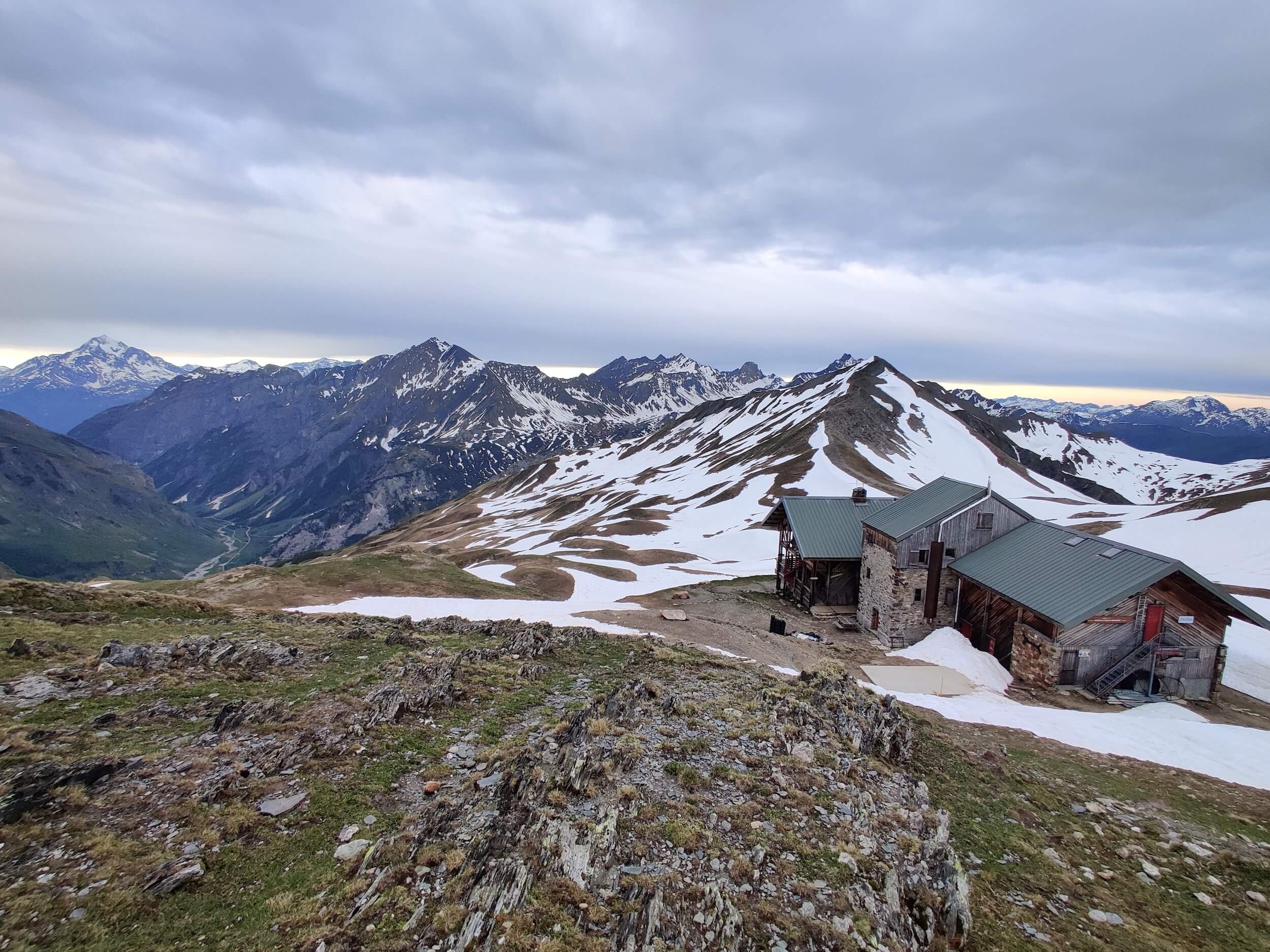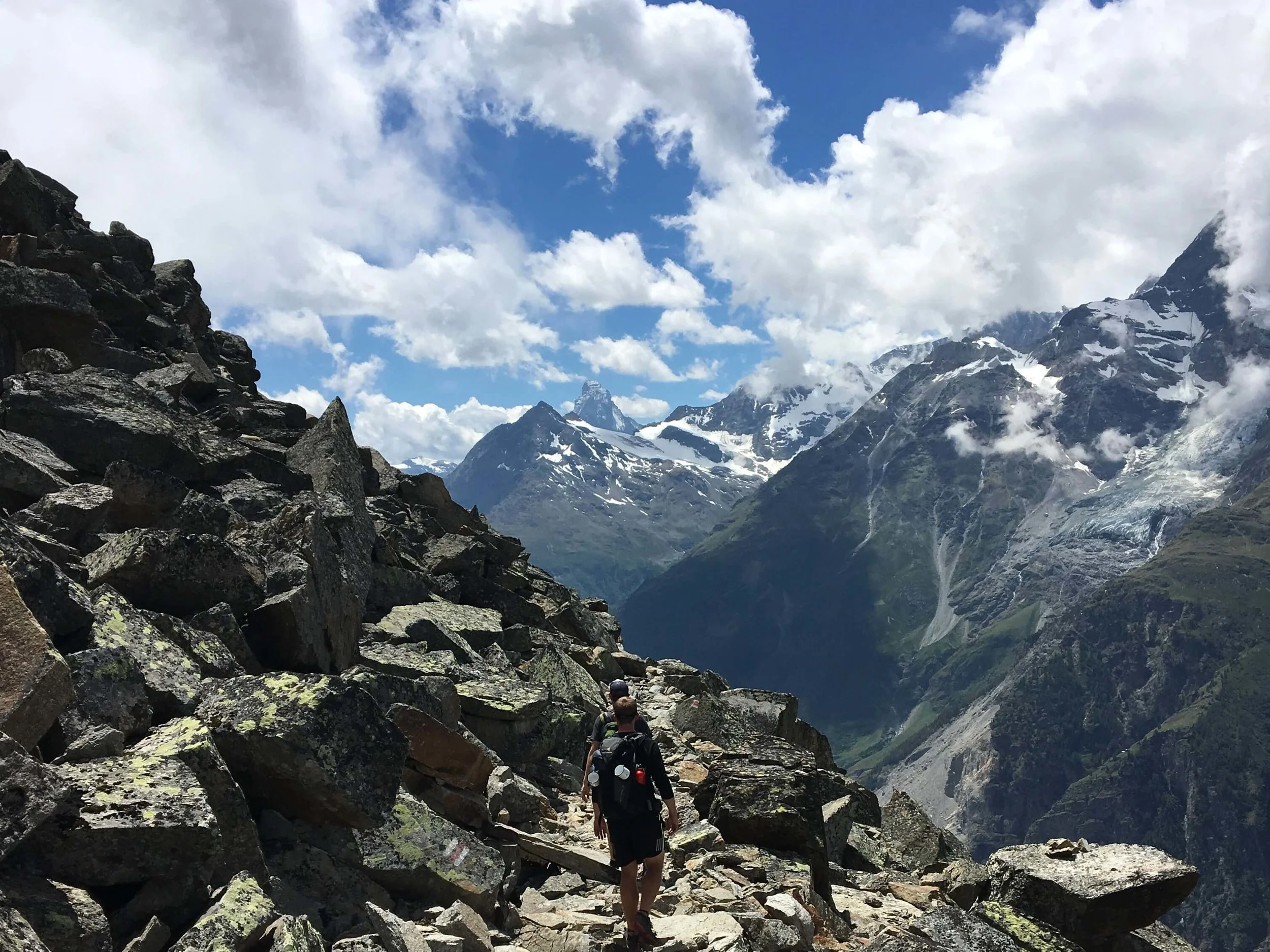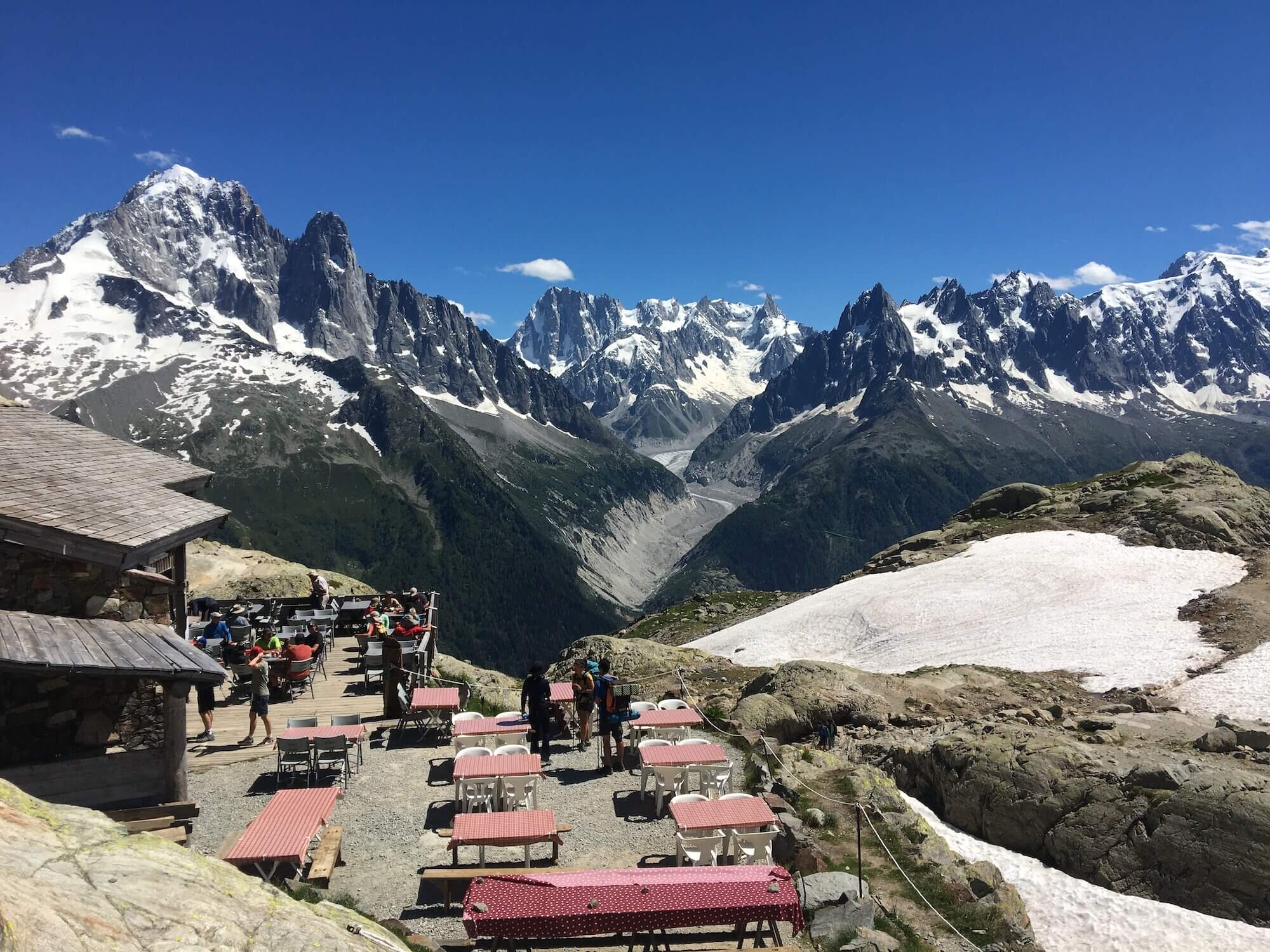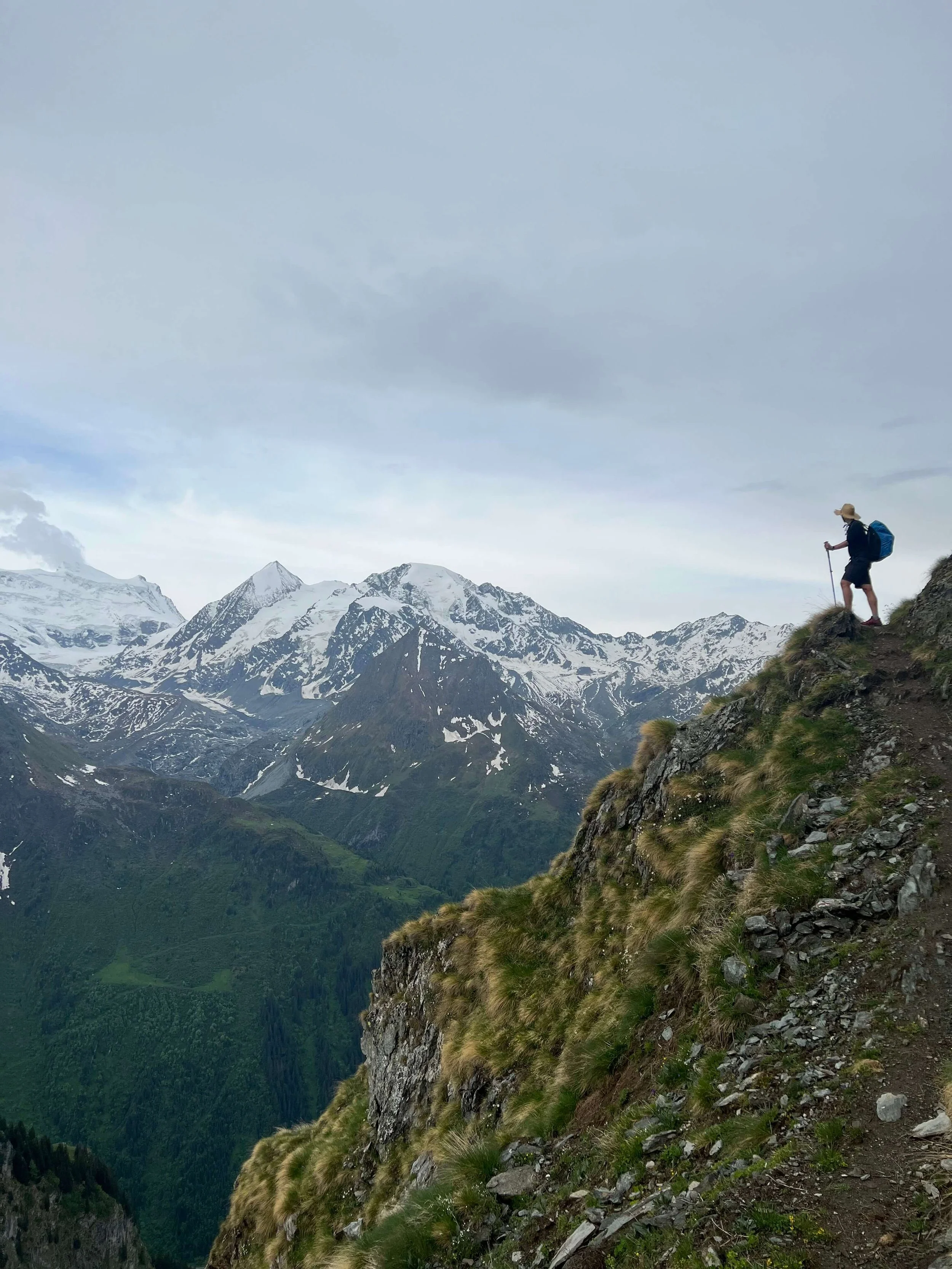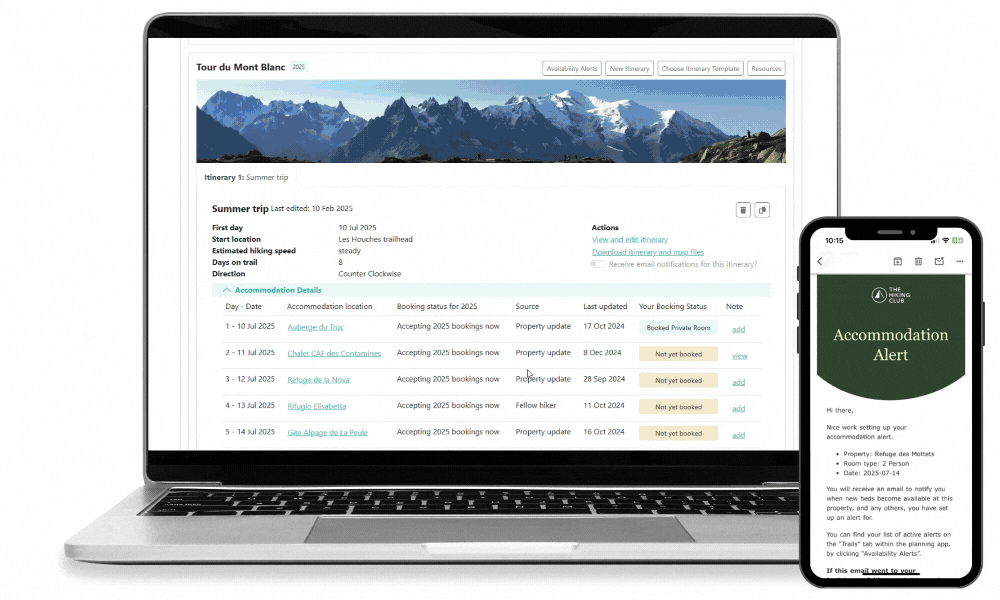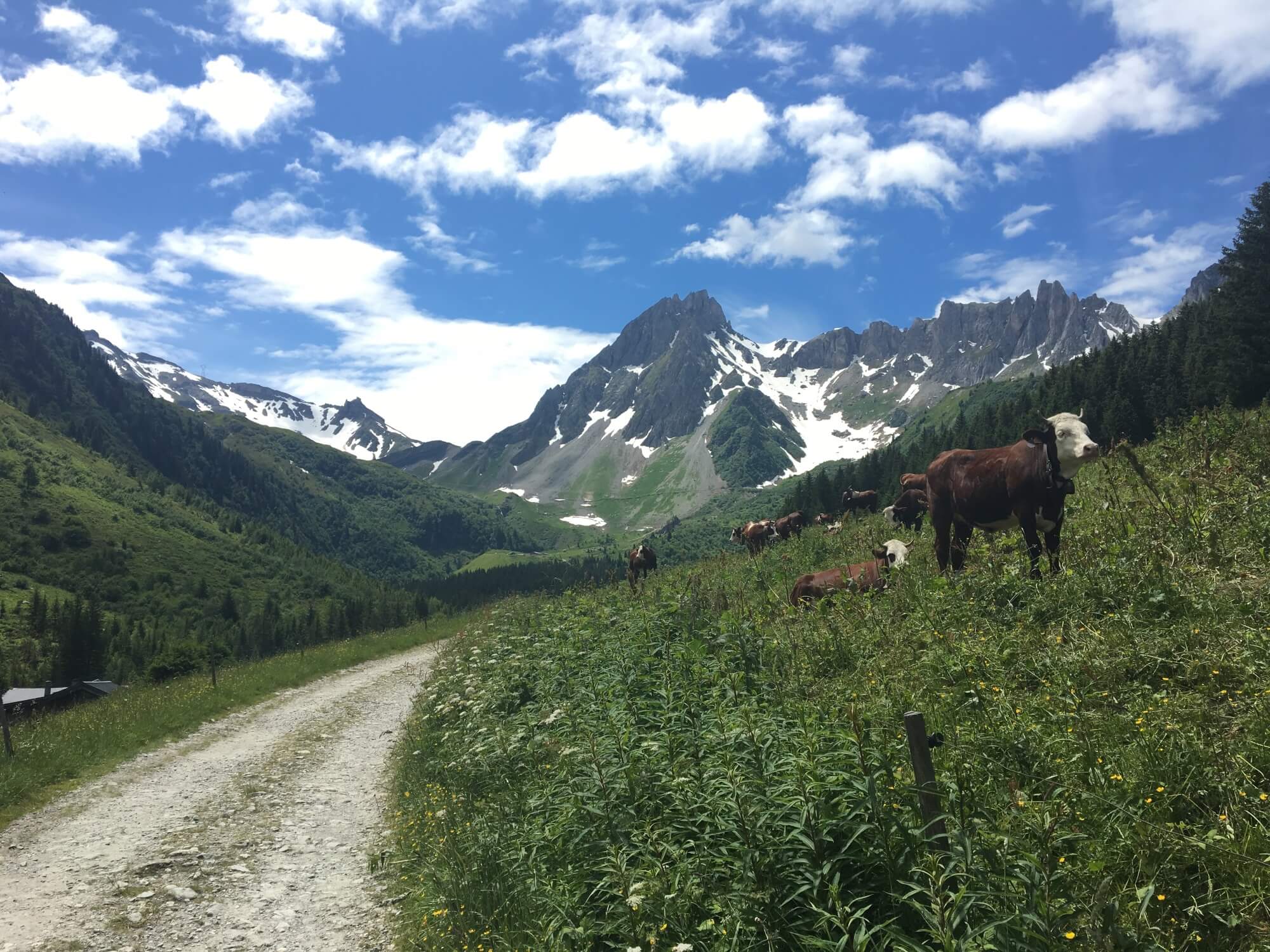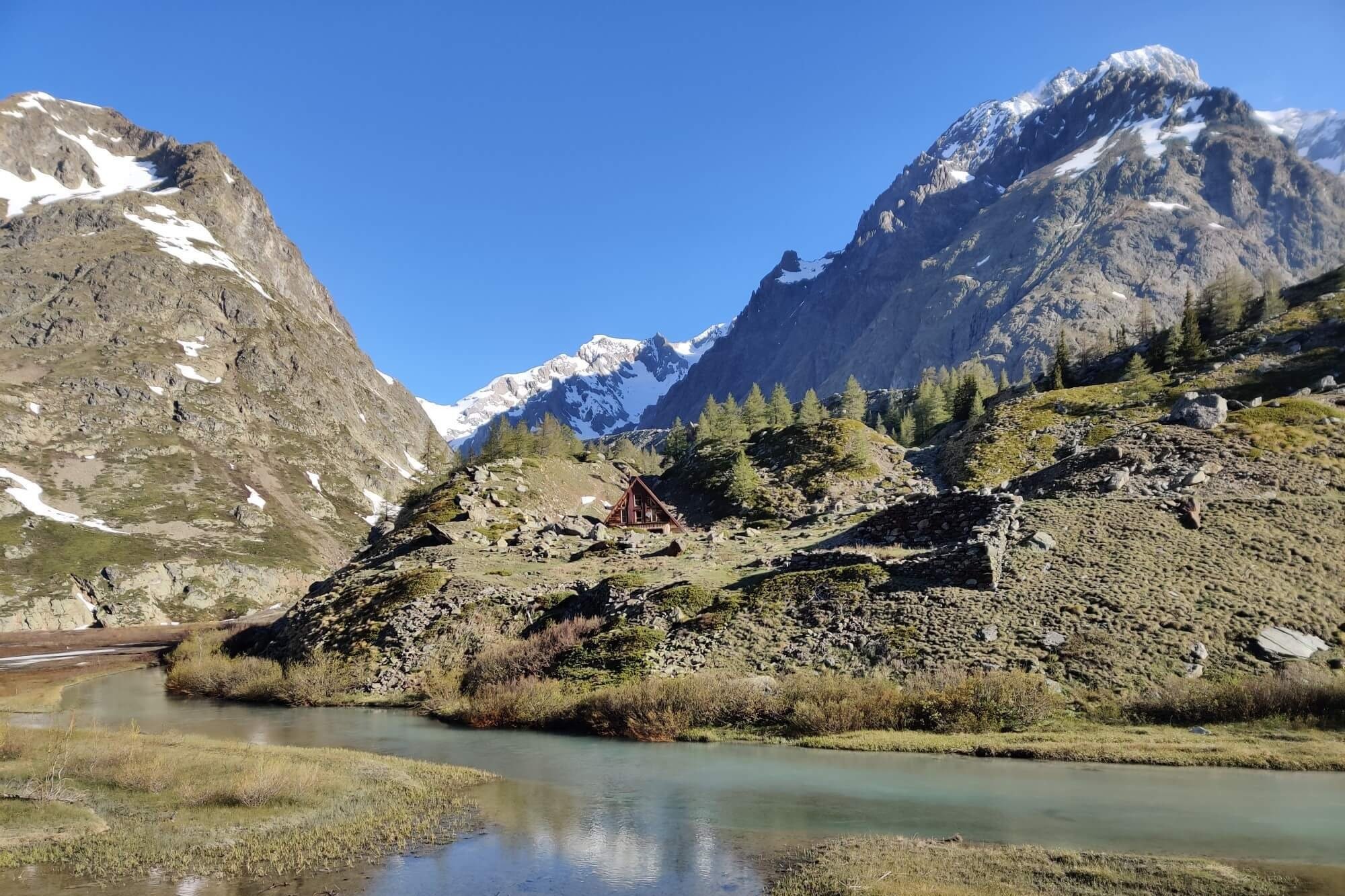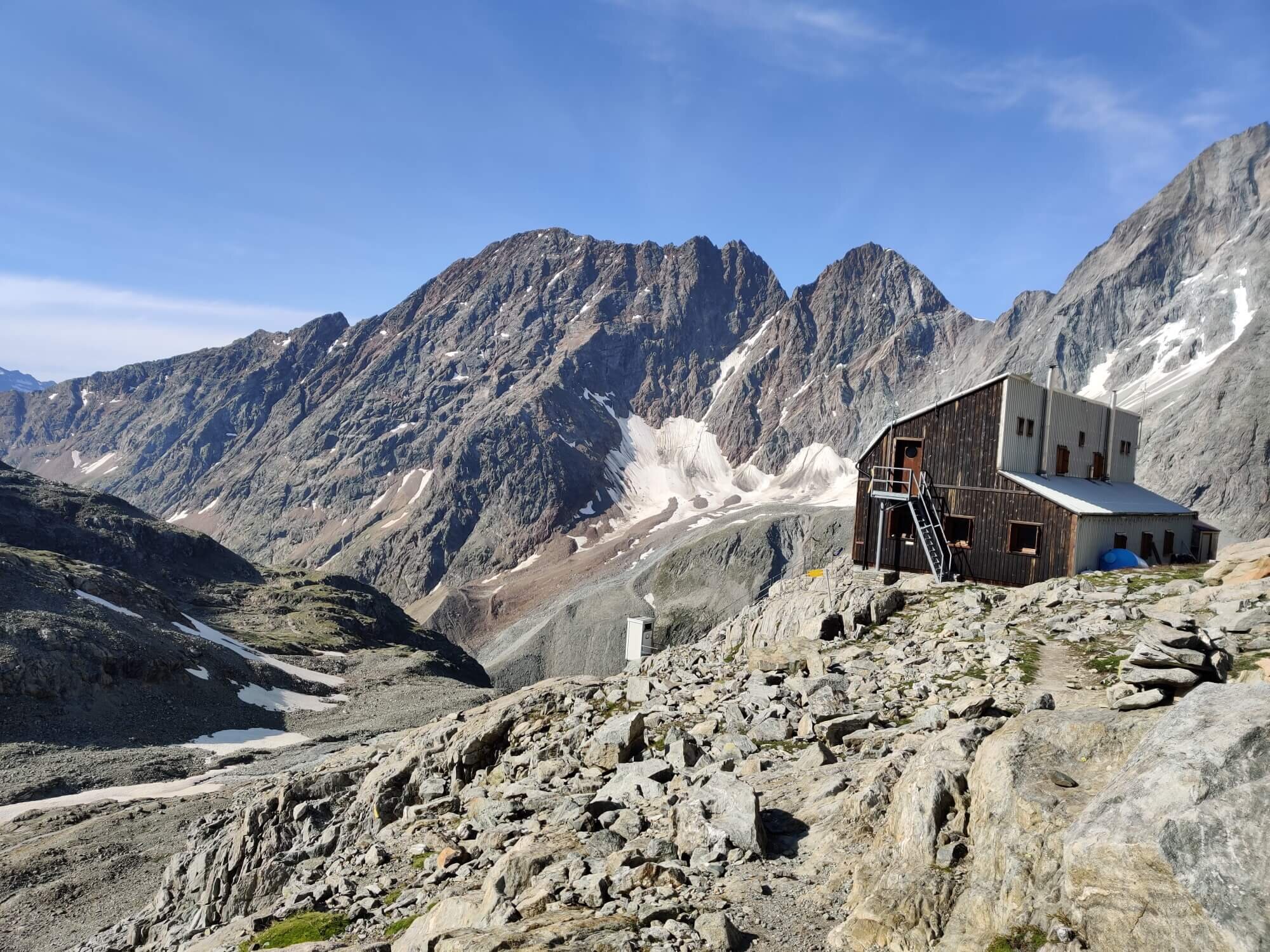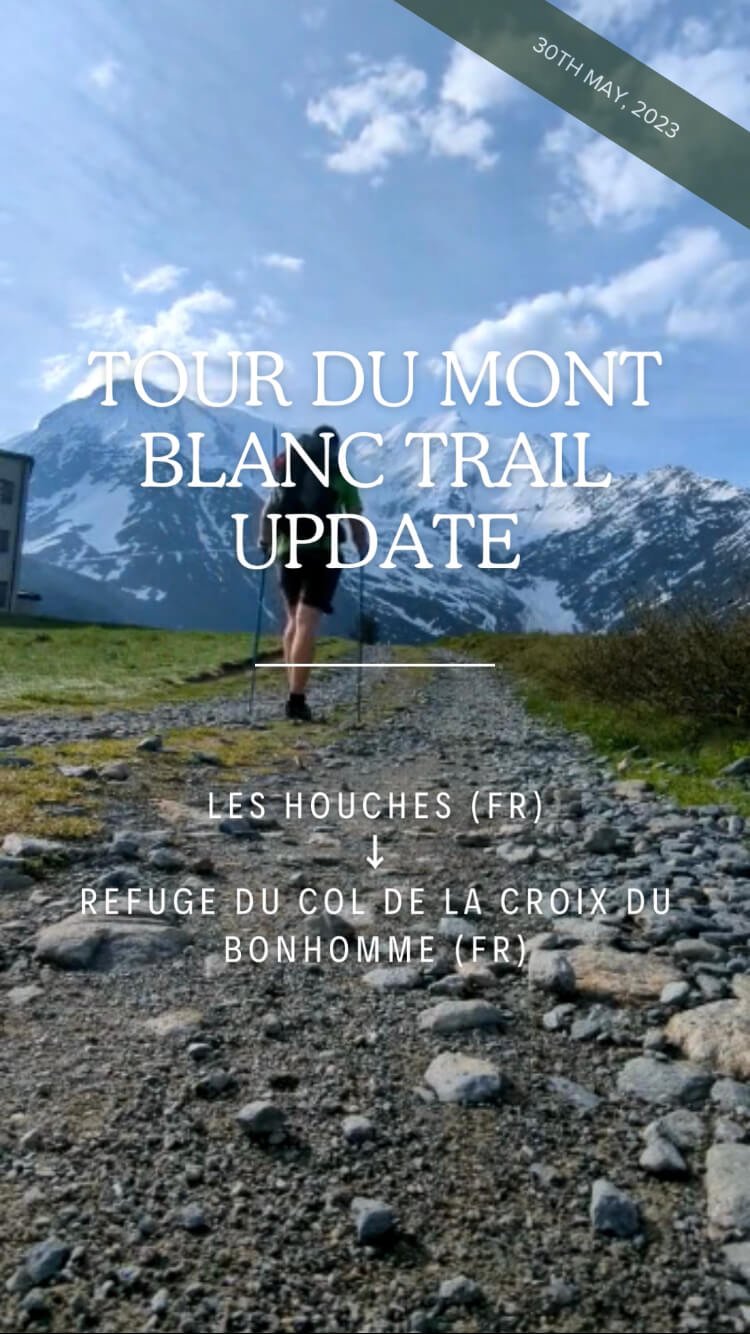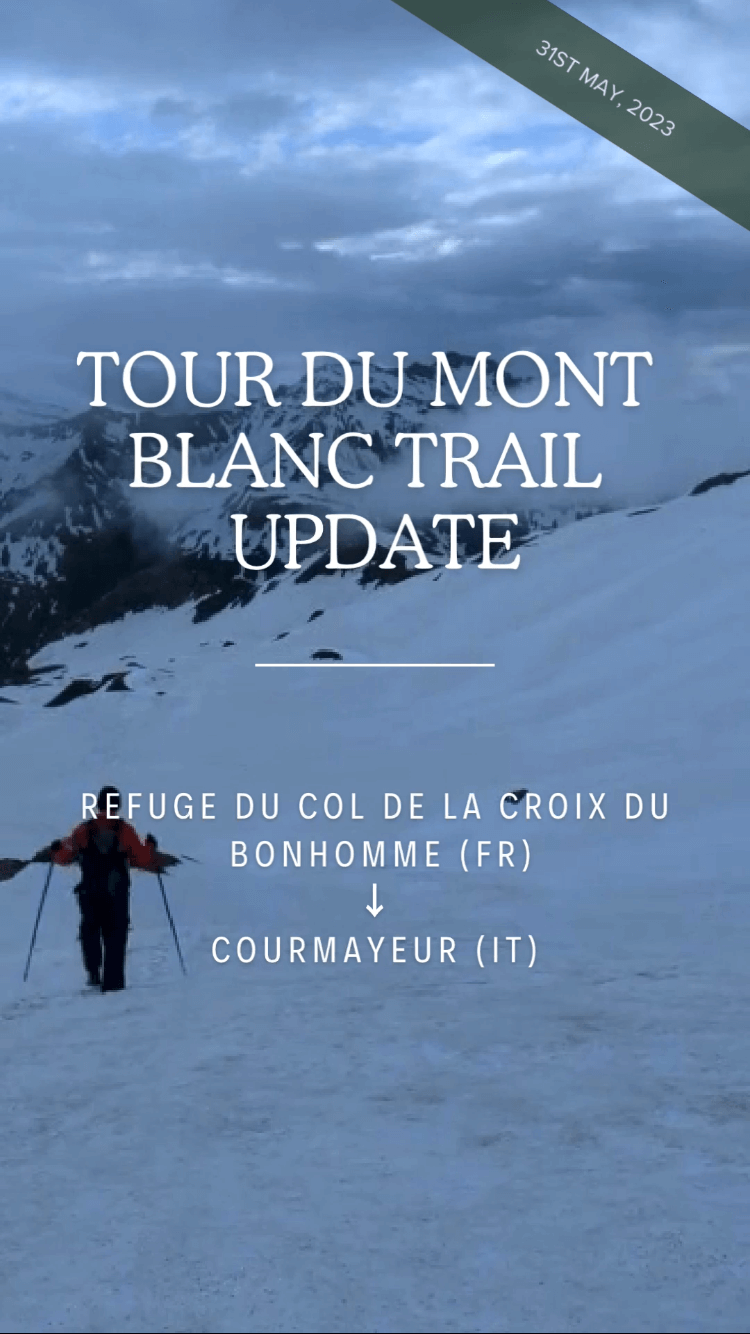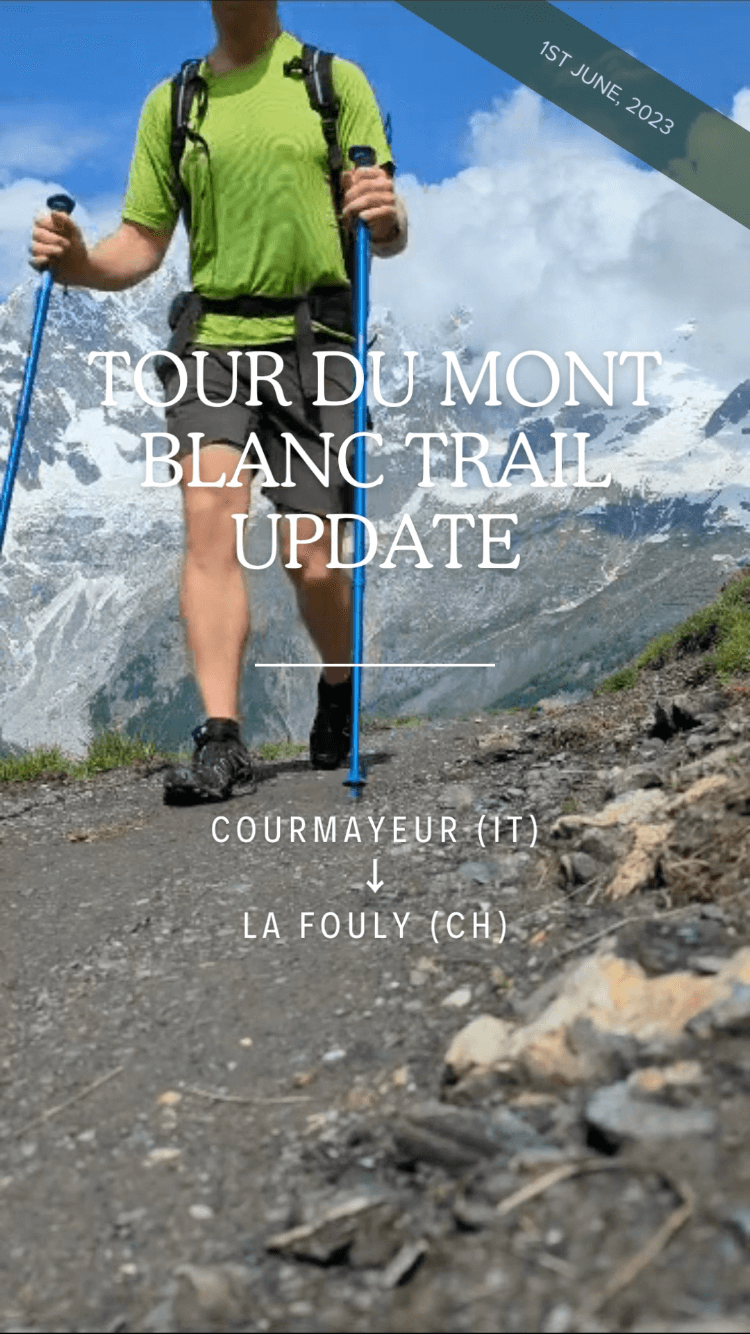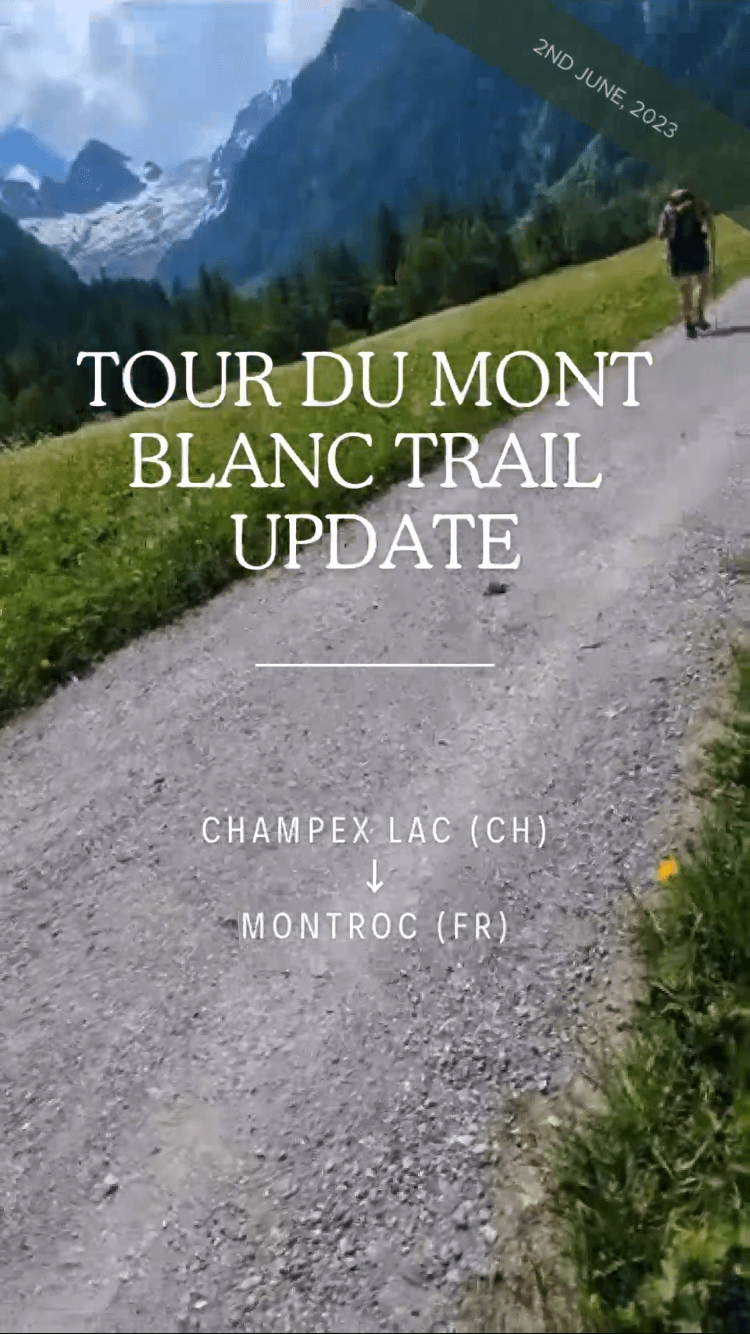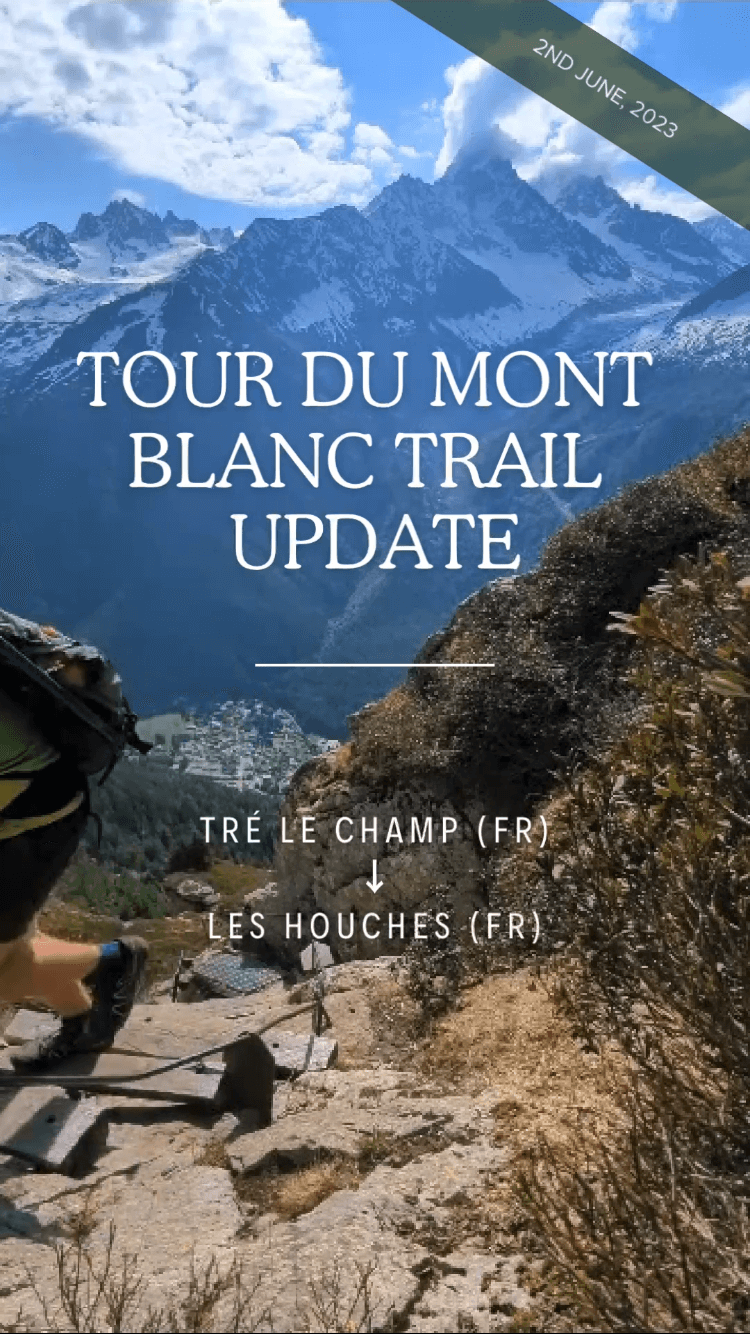While many of the wonderful Tour du Mont Blanc refuges will feature on your ideal self-guided hiking itinerary, what do you do if they have no availability when you go to book your own trip? In this blog post, I’m going to share accommodation booking tips and my top 4 booking tricks for finding accommodation that will keep your trip alive.
Creating your own training plan for hiking in the Alps
Real-time accommodation availability in our app
Updated 6th March 2025 for new properties.
As part of our acquisition of TMB Planner, we’ve integrated technology into our app to check bed availability for mountain huts. At time of launch, we focused on incorporating the existing TMB Planner accommodation scope for the Tour du Mont Blanc trail, however, we’ve now extended the same technology to other popular trails where accommodation is challenging for DIY planners to find, such as Alta Via 1 in the Dolomites and the newest trail, the West Highland Way in Scotland.
What type of accommodation can we provide availability data for?
The scope of mountain huts is limited to those which list their availability online. We can not provide availability data for mountain huts that do not list their availability online, for example, those properties requiring bookings to be made via phone, email, or submitting an online form.
In our accommodation database, we also have many more accommodation types along the trail, such as hotels, campgrounds and bivouac locations. Where an accommodation location lists their availability online, such as hotels, we plan to integrate this information into our app over the next year.
what type of accommodation can’t we provide availability data for?
If the accommodation location is one of the following, there is no availability data that we can provide you;
Bivouac or wild camping locations
Campgrounds that don’t accept/need bookings
Accommodation that don’t list their availability online
A general accommodation location rather than being for a specific property
The following Tour du Mont Blanc properties are now live. From March 7th 2025, you will also be able to see real-time availability and set alerts for the following properties on our other trails. More are planned to be added by the end of March!
-
Chalet Les Meandres (ex Tupilak)
Gite Michel Fagot
Refuge du Fioux
Auberge du Truc
Chalet CAF des Contamines
La Ferme a Piron
Gite Les Melezes
Gite le Pontet
Refuge Nant Borrant
Refuge des Pres
Refuge de la Balme
Refuge de la Croix du Bonhomme
Refuge de la Nova
Les Chambres du Soleil
Refuge des Mottets
Robert Blanc
Cabane Combal
Rifugio Monte Bianco
Rifugio Maison Vieille
Gite le Randonneur du Mont Blanc
Rifugio Bertone
Hotel Funivia
Hotel Lavachey
Hotel Chalet Val Ferret
Gite Alpage de La Peule
Hotel du Col de Fenetre
Gite de La Lechere
Chalet Le Dolent
Auberge de Maya-Joie
Auberge des Glaciers
Gite de la Fouly
Hotel Edelweiss La Fouly
Pension en Plein Air
Gite Bon Abri
Chalet La Grange
Relais d'Arpette
Hotel Col de la Forclaz
Auberge la Grande Ourse
Auberge du Mont-Blanc
Refuge Le Peuty
Refuge du Col de Balme
Gite Mermoud
Gite d'Alpage Les Ecuries de Charamillon
Albert Premier Hut
Chalet CAF du Tour
Gite Le Moulin
Auberge la Boerne
Refuge Lac Blanc
Plus some properties in the villages
-
Refuge Lac Blanc
Auberge la Boerne
Gite Le Moulin
Chalet CAF du Tour
Gite d'Alpage Les Ecuries de Charamillon
Gite Mermoud
Albert Premier Hut
Refuge du Col de Balme
Refuge Le Peuty
Auberge du Mont-Blanc
Auberge la Grande Ourse
Hotel Col de la Forclaz
Relais d'Arpette
Gite Bon Abri
Chalet La Grange
Pension en Plein Air
Cabane de Mille
Cabane Brunet
Cabane FXB Panossiere
Cabane de Louvie
Cabane de Prafleuri
Cabane de la Barmaz
Cabane des Dix
Cabane de Moiry
Turtmannhutte
Topalihutte
Taschhutte
-
Rifugio Biella
Rifugio Scotoni
Rifugio Lagazuoi
Rifugio Col Gallina
Rifugio Scoiattoli
Rifugio Averau
Rifugio Nuvolau
Rifugio Croda da Lago
Rifugio Passo Staulanza
Rifugio Adolfo Sonino Al Coldai
Rifugio Attilio Tissi
Rifugio Mario Vazzoler
Rifugio Bruto Carestiato
Rifugio Passo Duran
Rifugio Fanes
Rifugio Lavarella
Rifugio Fodara Vedla
Rifugio Pederu
Plus some additional properties in villages
-
Ashbank B&B
Braeside Guest House
Shandon Farmhouse
Inversnaid Bunkhouse
Inversnaid Hotel
Ardess Lodge & Ben Lomond Bunkhouse
-
Brochhuette SAC
Berghaus Alpiglen
Rotstockhuette
Gspaltenhornhuette SAC
Bluemlisalphuette SAC
Winteregghuette SAC
-
Cabane de Mille
Cabane Brunet
Cabane de Louvie
Cabane FXB Panossiere
Cabane de Chanrion
Rifugio Champillon
Rifugio Frassati
Mont-Joux Auberge
Great St. Bernard hospice
Hotel du Col de Fenetre
Gite de La Lechere
Chalet Le Dolent
Auberge de Maya-Joie
Gite de la Fouly
Auberge des Glaciers
Hotel Edelweiss La Fouly
La Tsissette Hut
Pension en Plein Air
-
Britannia Hut
Albergo Ristoro Sitten
Topalihutte
Taschhutte
-
Rifugio Puez (CAI)
The Hiking Club acquires TMB Planner to make the accommodation booking process easier for self-guided hikers
We’re excited to announce that The Hiking Club has acquired TMB Planner. Their innovative data processing and notification technology gives Do It Yourself (DIY) planners a powerful tool to assist them in booking their accommodation, and end up with the best itinerary possible for popular multi-day hikes.
The Hiking Club route planning app for the Tour du Mont Blanc now has real-time availability for mountain huts and the ability to set email alerts for room types thanks to TMB Planner joining the family :)
TMB Planner was developed by Leon Lan, a Mathematics PhD candidate focused on supply chain optimization. The idea came from a personal need he had when friends asked to join his planned Tour du Mont Blanc (aka TMB) trip only a few months out from the hiking season. As the Tour du Mont Blanc is one of Europe’s most popular multi-day hiking trails, most of the places Leon had booked no longer had any availability. Leon created a tool that tracked real-time availability and alerted him if new availability became available. As the hiking season approached, he received notifications and booked all the extra accommodation his friends needed to join him - what a good hiking buddy!
As part of this project, Leon found that most accommodation providers list new availability in the lead up to the hiking season, due to cancellations and tour operators giving up beds they don’t need. Based on data collected between December 2023 and the 2024 hiking season, over 2,000 beds were added back to online booking platforms for the mountain huts. Having already built the technology, Leon thought others in the hiking community would benefit from what he’d created, and so the availability calendar and alerts tool was born.
TMB Planner displays real-time availability for mountain huts that list their availability online, and notifies users via email when new beds become available to book for their target properties/dates. It helps:
early season hikers be the ‘first to know’ when accommodation providers list their availability for next season, and
gives later planners an opportunity to be notified when new beds (or private rooms) become available, so they can cancel off-trail accommodation and rebook their preferred property.
See real-time availability and set email alerts in The Hiking Club route planning app to be notified when new beds/room types become available
“We are thrilled to welcome Leon into The Hiking Club family. His innovative tools will support our mission to help self-guided hikers confidently plan, book and navigate their epic adventures. Booking your own accommodation on a multi-day hike, is one of the most difficult parts of planning your own hike. By combining TMB Planner’s technology with our own, we’ll provide The Hiking Club customers an easier booking experience, and the best chance to secure high-demand beds for their ideal itinerary”
Tour du Mont Blanc availability calendar is now available on The Hiking Club website
“I’m delighted that the technology I’ve created has found a home in The Hiking Club platform. The collaboration with Brendan and Nick from The Hiking Club has been excellent over the past few months, and I’m excited to continue working with The Hiking Club to extend the technology to other trails and maximise its benefit to the community.”
With the integration of TMB Planner into The Hiking Club platform, the availability calendar will now be accessible free on The Hiking Club website, without the need for any sign-up. The accommodation alerts have been integrated into our popular web-based planning app and available for Tour du Mont Blanc customers.
In the coming months, we’ll be working to extend the functionality to other popular trails such as Alta Via 1 Dolomites, West Highland Way, Walker’s Haute Route and more. Stay tuned for updates on this exciting integration!
About TMB Planner: Planning tools to make your Tour du Mont Blanc hike easier, including real-time hut availability and email alerts when huts begin accepting bookings for next season.
About The Hiking Club: With the first purpose-built app for multi-day hikes, up-to-date trail information, expert consultations, online events, a training program, and an active ambassador community, The Hiking Club has everything a self-guided hiker needs to confidently plan and navigate their epic adventure.
5 Top Tips for hiking the Tour du Mont Blanc Solo
Meg completed the Tour du Mont Blanc in 2024 as a trail ambassador. This was her first solo thru hike. Read her top tips for hiking the TMB solo.
Hiking the Tour du Mont Blanc with kids
The Smith family hiked the full circuit of the Tour du Mont Blanc in July 2024, staying in gites, mountain huts, and hotels. They carried everything they needed on their backs (there was no luggage transfer). Read Meggan’s tips about preparing and hiking a multi-day hike with kids.
Hiking the Tour du Mont Blanc with kids
Attempting your first multi-day hike can be intimidating. Doing it with kids adds a layer of complexity. I hope in sharing our experience hiking the Tour du Mont Blanc with our kids (a 10-year-old son and a 12-year-old daughter) that you will have a better idea of what a trekking adventure in the mountains might entail for your family.
Of course, every child is different, and you know your child(ren) best. Our family was already fairly active, and most family vacations involved some physical activity, especially hiking when exploring the beautiful National Parks across the United States. However, none of us had completed a multi-day hike, and most of our hikes in the Eastern United States did not exceed 1,000 ft elevation gain, so hiking the Tour du Mont Blanc (TMB) in the Alps was going to stretch all of us physically and mentally. My kids are also good at following directions, so I felt reasonably confident that if we told them to “stop” on the trail, they would do so (we also practiced this on our training hikes).
Below are tips and lessons from our family’s experience preparing for and hiking the TMB with kids. I hope they are helpful to other families (or individuals) who are considering making the trek. It truly is a trip of a lifetime!
preparation is key
Although preparation is important for everyone planning to hike the TMB, we were especially intentional as we embarked on this adventure with our kids.
Practice hiking trails, increasing distance and difficulty over time. This seems obvious, but it’s so important to help kids get used to hiking on uneven terrain, not only to strengthen their muscles but also to learn how to navigate technical spots and build their confidence in covering longer distances.
Practice wearing your gear. Runners always say: “Nothing new on race day” and we adopted that same mindset for hiking the TMB. We practiced using ALL our gear from our socks and shoes and undergarments to our outer layers. Rainy day on the weekend? It's the perfect opportunity to test our rain gear and new waterproof socks. A dusting of snow? That sounds like a great opportunity to wear our nano puff jackets and work on our footing in slippery conditions. Sunny and warm? It's time to test our new sunshirts, hats, and sunscreen. Test EVERYTHING – especially on longer hikes. My daughter discovered that a shirt that was fine on short and mid-distance hikes ended up chaffing her on double-digit hikes. Thankfully we had time to find an alternative that worked before setting foot on the TMB.
Practice wearing your backpacks. Our family was hiking hut-to-hut with no luggage transfer, so we needed to get used to carrying our packs with EVERYTHING. We got fitted for our backpacks at our local REI (an outdoor recreation store in the United States) which helped us identify the right size pack that fit each of us. We started carrying the 10 essentials on our practice hikes; but as we purchased our gear for the trip, we progressively added it to our packs, so we got used to the weight. This also allowed us to figure out before we got on the plane what we truly NEEDED vs what we could leave behind to help shed weight.
4. Practice hiking on similar terrain. We did not have the luxury of traveling to real mountains with elevation gain comparable to what we would experience on the TMB, but we did our best to simulate the trek. We tried to find hilly trails near us, and once we got comfortable with double-digit hikes, we completed a few back-to-back hikes on the weekends. Over a 3-day weekend six weeks before our trip, we not only tackled three double-digit hikes in a row, but we also stayed at a hostel for hikers along the Appalachian Trail one of the nights to practice sleeping in an unfamiliar location after a long day of hiking. It was a fabulous experience and gave us more confidence that a multi-day hike was achievable and enjoyable.
5. Practice strengthening your mental game. We found that hard training hikes helped build resilience, and struggles along the way were opportunities to learn what helped our kids push on (we also figured out what did NOT motivate them... ahem, daddy lectures!). We quickly discovered that eating snacks early and often helped keep our kids cheerful and moving. If we waited until they got the hangries, it would take a while for them to recover. We also watched a lot of TMB videos on YouTube so they could see the big climbs and also get a feel for the types of places we would be staying on the trail. While they thought this was boring at the time, knowing what to expect seemed to help a lot once we were on the trail.
on the trail
Time to put all that preparation to use!
Take breaks. Prepare for lots of short breaks. Unless you have terrain and elevation gain similar to the Alps nearby, the TMB will probably still be challenging even with your training. Expect your kids to want/need lots of short breaks. These breaks are a great opportunity to make sure everyone is staying fueled and hydrated, adjust layers, and reapply sunscreen (side note: you’ll need more sunscreen than you might expect!) --- and provide the time to take breathtaking photos while you catch your breath.
Keep everyone fueled. Take advantage of the food on the trail. Have I mentioned that my kids do better when they have snacks? We usually opted to purchase two packed lunches from our accommodation (remember to order them the night before!) and we would either snack on them throughout the day or use them as our main mid-day meal (depending on what the food availability looked like for that section of the trail). This worked well especially when combining our packed picnics with short stops at refuges on the trail for additional food and drink (NOTE: I posted what we spent on the trail in my daily Instagram recaps to give an idea of cost). Another favorite thing we did was buy a baguette from the local boulangerie and tear off hunks of bread to nosh on while hiking.
3. Make adjustments as needed and as soon as identified. If a sock feels weird in your shoe, stop and fix it – don't wait until it becomes a bigger issue. Too warm? Stop and shed a layer. The time spent making adjustments to be as comfortable as possible is well worth it – especially if the change avoids blisters, heat exhaustion, sunburn, etc. Kids, or at least our kids, may recognize an issue but struggle with knowing how to make adjustments. Practice hikes can provide opportunities to learn how to adjust (especially your pack), but it is so important once you’re on the tail. Even small adjustments can make a day on the trail so much more enjoyable; for instance, our daughter quickly got into the habit of dipping a handkerchief in the cool streams that we crossed to cool off her face and neck.
4. Plan for distractions. While I wish I could say our kids were completely enthralled with the beautiful views of nature the entire time, the truth is, while yes – they had several moments of stopping to take pictures and marveling at the breathtaking landscapes – they also got bored. Our youngest found that he could deal with the hard climbs by having his dad tell him the storylines of various movies (one rainy day we were treated to a recap of the “Back to the Future” trilogy....). That did not work for our tween daughter, however. We figured out halfway through the trip that she was much more pleasant if she could listen to music on the hard climbs. Thankfully I brought my Shokz open-ear headphones. The complaining stopped if she could listen to music on the inclines. We let our son use them to listen to an audiobook during the long descent to Les Houches on our final day, and it added a pep to his step. For our next multi-day trek, I will probably make sure we have two sets of Shokz (I like them because they are open-ear, so you can listen to your audio while still hearing those around you – an important safety measure!) with audiobooks and music pre-downloaded to our devices.
5. Take note of shortcuts. While we only made use of a few of the shortcuts available, I did take note of the various public transportation, cable cars, and shortcuts ahead of time, so if we had bad weather, were short on time, or someone wasn’t feeling well, we had options. We planned to take the Bellevue Cable Car on the first day and were happy we did so – especially since we did the Col de Tricot variant. Taking the Delone Cable Car was a huge plus for my daughter as we headed down to Courmayeur for a rest day. I will say that this is where customized maps from The Hiking Club combined with the Organic Maps app were super useful – you can see public transportation options – but also alternative routes. On our last two days on the trail, less-than-ideal weather had us adjusting our routes on the fly, and I was so thankful that we could see what options were available to us when we needed to make decisions in the moment.
6. Staying in accommodations. We were fortunate enough to book private rooms or 4-person dorms for all nights except two on the trail. This worked well for our family, as it allowed the kids to be a little more comfortable after a long day of hiking. We still got the mountain hut experience with the shared meals and (often) shared restrooms. Our two evenings in shared dorm rooms were fine – thankfully we had lovely roommates both times (6-person dorm rooms). But the nice thing about hut-to-hut hiking is that even if you don’t love the place you’re staying at one evening, it is only for one night and you’ll have a new place to look forward to the next night.
Reflections
While hiking the TMB is not for everyone, with the proper preparation and a willing attitude, it is possible to complete the trek (or part of the trail) with children. I loved watching my kids grow on the trail. They adapted to trail conditions, problem-solved, tried new food, and met people from all over the world – all while hiking more than 100 miles over 11 days. Was there complaining? Yes. Were there tears? Yes. Were there sore legs? Yes. But there were also memories made, relationships formed, and fears conquered – it was the trip of a lifetime. All of us learned to be more resilient; we pushed through pain and fatigue and learned each day that we could do hard things.
Upon returning home, we returned to our familiar trails of the AT and started reminiscing about the Alps... My teen daughter started talking about which sections of the TMB she would want to repeat when we return in a few years – as well as what other trails she would like to explore in the Alps.
Time to start planning our next adventure!
Follow Meggan on her Instagram for more family hiking content: @mountainsarecalling_wemustgo
The best weather apps for the Tour du Mont Blanc
There are two types of weather conditions you should keep an eye on before embarking on your Tour du Mont Blanc hike, snow conditions - particularly important for early season hikers - and general weather forecast.
Should I get an Alpine Club membership for the Tour du Mont Blanc?
The Tour du Mont Blanc travels through France, Switzerland and Italy.
If you are a member of one of the respective alpine clubs, you get discount on accommodation at their mountain huts. Unless you plan to stay exclusively in alpine club mountain huts, it is not usually worthwhile getting membership only for the hike. Here are the details on each alpine club membership:
FRENCH ALPINE CLUB MEMBERSHIP
The French Alpine Club has a membership program that provides discounts to their mountain huts. Membership is about 100 - 120€ and is open to non-French citizens. For full details click here. The huts along the Tour du Mont Blanc that are owned by the French Alpine Club include Albert Premier (1er), Refuge Croix du Bonhomme and Chalet Des Contamines.
Refuge Croix du Bonhomme
SWISS ALPINE CLUB MEMBERSHIP
The Swiss Alpine Club has a membership program that provides discounts to their mountain huts. Membership is from 80 CHF and is open to non-Swiss citizens. For full details click here. None of the huts along the Tour du Mont Blanc are owned by the Swiss Alpine Club.
ITALIAN ALPINE CLUB MEMBERSHIP
Rifugio Elisabetta
The Italian Alpine Club has a membership program that provides discounts to their mountain huts. Membership is from 45€ and is open to non-Italian citizens. For full details click here. The huts along the Tour du Mont Blanc that are owned by the Italian Alpine Club are Rifugio Elisabetta and Rifugio Monte Bianco (in Val Veny off the TMB trail)
plan and navigate your ultimate Tour du Mont Blanc adventure
Transport to/from the Tour du Mont Blanc trail: What are my transport options?
Should I hike the Tour du Mont Blanc clockwise or count-clockwise?
Comparing the Tour du Mont Blanc and Alta Via 1: Which is Right for You?
When planning a European trekking adventure, two routes often stand out for their breathtaking scenery, sense of adventure, and challenge: the Tour du Mont Blanc (TMB) and the Alta Via 1 (AV1) in the Dolomites. While both are famous and stunning in their own right, they offer different experiences in terms of length, difficulty, crowds, terrain, and scenery. So, which is the better fit for your next trek?
Running the Tour du Mont Blanc in 7 Days
How much does it cost to hike the Tour du Mont Blanc?
It costs €826 to plan your own 10-day hike of the Tour du Mont Blanc. This amount comes from our new cost calculator for the Tour du Mont Blanc, which uses over 300 actual customer itineraries and 2023 costs from nearly 100 accommodation and service providers along the trail.
the calculator is for self-guided hikers to estimate how much it will cost them to organise their own hike of the Tour du Mont Blanc based on their preferences. Give it a try!
Hiking Poles: Essential Gear for Long-Distance Hiking in the Alps
Hiking poles are essential gear for long-distance hiking in the Alps. They provide a number of physical benefits that can help you hike more comfortably and efficiently. Read our blog post to learn more about why to use hiking poles, how to use them, where to buy them and how to travel with them on the aeroplane.
The Tour du Mont Blanc Anytime Itinerary
Have you started planning the Tour du Mont Blanc in the usual 11 stages and finding fully booked locations for the dates you want?
You’re not alone!
Accommodation booking anxiety is experienced by most self-guided hikers that book their own accommodation…and a popular conversation topic on the trail :)
introducing THE “TMB ANYTIME” ITINERARY
When accommodation availability becomes scarce, this 11-day itinerary will keep your TMB dreams alive! Staying at villages and using transport provides you a much needed bed.
Average daily stats:
Distance: 16.5km / 10mi
Elevation gain: 1,000m / 3,300ft
Time (steady pace): 6 hours, not including breaks
Accommodation: Staying in villages that have the most accommodation options
This 11-day itinerary for the Tour du Mont Blanc gets around all of the locations that are typically booked out…without needing to do any camping!
The Hiking Club has always championed self-guided hikers who want to stay in control of their itinerary and costs by planning and booking their own trips. We have over 5 years of experience creating itineraries for the Tour du Mont Blanc that are available to book at any time of the year. Our new trip planning app is the 3rd generation of our self-planning product that gives hikers the power to easily create an achievable, inspiring, and available-to-book itinerary in one session.
If you want some assistance in designing an itinerary that is ready for you to book based on your specific dates and requirements, we can do this via our Expert Access package.
The “Tour du Mont Blanc Anytime” itinerary broken down stage-by-stage
Stage 1: Les houches to les contamines
Les Contamines-Montjoie has 6+ hotels/b&bs/refuges and a range of holiday rentals. Hikers rarely have trouble finding accommodation here due to the large number of beds relative to other stages of the trail.
What do you do if you can’t secure accommodation here?
The next best option is staying at the cabins at Le Pontet campground
Click to expand. The trip planning app is included in all self-guided packages.
Stage 2: Les Contamines-Montjoie to Les Chapieux
Vallée des Chapieux, which includes Refuge de la Nova, Les Chambres du Soleil and Refuge des Mottets, is usually the first area of the trail to be fully booked. Although there are quite a few beds here, only about 20% are available for hikers booking their own trips, with tour companies putting holds on the rest.
You’ve got two options to overcome fully booked locations here;
Stay at the French alpine club hut Refuge de la Croix du Bonhomme
Catch the bus (or arrange a taxi) to stay in Bourg Saint Maurice for the night. It takes about 25 mins to reach Bourg Saint Maurice, and there are many accommodation options here.
Click to expand. The trip planning app is included in all self-guided packages.
Stage 3: Les Chapieux to La Visaille Bus stop
Val Veny in Italy, which includes Rifugio Elisabetta and Cabane Combal, is also an area of the trail where it becomes hard to find availability. The next closest accommodation option is actually in Courmayeur…via the direct bus, which departs from La Visaille and takes about 25 mins. We’ve added a little ‘Courmayeur basecamp’ accommodation location in La Visaille which highlights you’re planning to catch the bus to Courmayeur for the night.
The following day, return on the bus to La Visaille and rejoin the main Tour du Mont Blanc trail near Cabane Combal.
Click to expand. The trip planning app is included in all self-guided packages.
Stage 4: La Visaille Bus stop to Courmayuer
Courmayeur has a huge amount of accommodation so finding availability isn’t usually a problem. You can use the bus network to reach properties further south if necessary.
Click to expand. The trip planning app is included in all self-guided packages.
Stage 5: Courmayuer to Arp Nouva bus stop
Most hikers will stay a night between Rifugio Bonatti and Rifugio Elena, however, this area does become booked out. When it does, the next closest accommodation option (once again!) is Courmayeur…via the direct bus, which departs from Arp Nouva and takes about 25 mins. We’ve added a little ‘Courmayeur basecamp’ accommodation location in Arp Nouva, which highlights that you’re planning to catch the bus to Courmayeur for the night.
Click to expand. The trip planning app is included in all self-guided packages.
Stage 6: Arp Nouva bus stop to La Fouly
There is usually a surplus of beds in La Fouly for two reasons;
There is 5+ accommodation options in the area
The next stage is a popular one for hikers to skip so some people don’t end up staying around here at all.
For these reasons, La Fouly is one of the last places I recommend people book.
Click to expand. The trip planning app is included in all self-guided packages.
Stage 7: La Fouly to Champex Lac
There is a reasonable range of accommodation in Champex Lac, which is further boosted by additional properties in Champex Den Haut and Arpette, which are within reach for most hikers. It is a popular stand-alone destination for people to visit and stay at during the summer so can be fully booked, especially on Friday and Saturday nights.
What do you do if you can’t secure accommodation in this area?
The next best option is taking a ~20-minute bus to Orsières in the valley below, where there is a great hotel at the station and further transport links to find other accommodation nearby.
Click to expand. The trip planning app is included in all self-guided packages.
Stage 8: Champex Lac to Trient
The Trient Valley, which includes Auberge la Grande Ourse, Auberge du Mont-Blanc, Refuge Le Peuty, and Hotel Col de la Forclaz, is an area of Mont Blanc where most Tour du Mont Blanc and Walker’s Haute Route hikers need to stay - making it hard to find availability.
What do you do if you can’t secure accommodation in this area?
Refuge Les Grands and Refuge Col de Balme are two locations typically within reach of strong hikers and provide idyllic locations to spend a night (note you need to bring your own food to cook at Refuge Les Grands).
An infrequent bus that takes ~10 mins runs from Trient to Le Châtelard-Frontière during July and August, where there is a hotel. The departure times to reach the hotel are okay in the afternoon; however, based on last year’s timetable, you won’t be able to reach Trient until about 10am the following day.
A bus that takes ~45mins to reach Martigny where there is a large range of accommodation. The bus runs about 5 times per day - allowing you to depart for Martigny a few times during the afternoon and return to Trient by about 8am the following day.
Click to expand. The trip planning app is included in all self-guided packages.
Stage 9: Trient to Argentiere
Tre-le-Champ is the usual stop for hikers in this area of the trail with Gite le Moulin the typical alternative which also books out early.
Argentiere is the next location to look at with a couple of big hotels in the centre of town and various vacation rentals on the outskirts.
Click to expand. The trip planning app is included in all self-guided packages.
Stage 10: Argentiere to Plan Praz (Chamonix)
Chamonix has a huge amount of accommodation so finding availability isn’t usually a problem. You can use the train or bus network to reach properties up and down the valley.
Click to expand. The trip planning app is included in all self-guided packages.
Stage 11: Plan Praz (Chamonix) to Les Houches
Les Houches has 4 main accommodation options. However, 3 of them are not in the village center. Hikers can use the bus network to easily reach Chamonix or other locations with accommodation in the valley.
Click to expand. The trip planning app is included in all self-guided packages.
So there you have it. The “TMB Anytime” itinerary for those booking in October, January, March of July. This itinerary will provide you accommodation options so you can make you Tour du Mont Blanc journey a reality!
Oh and if you want the “TMB Anytime” itinerary, it’s available in our itinerary library so all you need to do is buy a self-guided TMB package and this itinerary can be loaded straight into your app for planning, booking, and navigating!
Where to start/end your Tour du Mont Blanc hike?
What are the different trail types in the Alps?
When is the best time to hike the Tour du Mont Blanc?
Tour du Mont Blanc: Main, Variant and Alternative Routes
The “main” Tour du Mont Blanc trail is 166 km / 103 mi and travels around Mont Blanc, Europe’s highest mountain at 4,810m (15,781 ft). The trail crosses 10 mountain passes with a total elevation gain of just under 10,000m (32,700ft). Hikers will see alpine lakes, magnificent glaciers and lush meadows. The Tour du Mont Blanc is one of the legendary multi-day hikes in the Alps. Read our detailed blog post which takes a “walk” through all the different sections of the main Tour du Mont Blanc trail, including images, descriptions and trail stats.
2023 Tour du Mont Blanc Trail Updates
2023 TOUR DU MONT BLANC TRAIL UPDATES
Updated: June 13th 2023
Knowing what the early season trail conditions are like is a really important part of a self guided hikers preparation. It helps with;
Awareness of the challenges
Appropriate gear choices
Review of alternative routes/options
Revision of plan (if necessary)
Our updates are kept up-to-date during the 2023 hiking season by The Hiking Club team and our 20+ Trail Ambassadors.
Key trail updates include:
Our Break The Trail hike
Latest trail updates
Gear recommendations
⛏ BRENDAN’S BREAK THE TRAIL HIKE
From May 30th to June 2nd 2023, Brendan Jones, Founder of The Hiking Club, completed the Tour du Mont Blanc in 5 days. He documented his trip extensively on social media, providing live accounts of snow conditions across the key mountain passes and difficult sections of trails.
Click on below image to see each of the detailed daily trail updates:
On June 4th, 2023, Brendan presented a one hour “Live from the Alps” webcast to share an update of the current trail conditions including snow conditions, route detours and gear recommendation. It also includes a live Q&A session that covers everything from using microspikes, best local weather sources and alternate route choices. Watch the recording below.
Follow our dedicated TMB Instagram page to get latest updates
📸 LATEST IMAGES FROM THE TRAIL
We’ve created a highlights reel on Instagram where you can see the most current live updates from our 20+ trail ambassadors that complete the TMB between June > September.
SPECIFIC TRAIL UPDATES
3rd June, 2023: Bissonnay bridge now installed. 📸 Eliza, THC Trail Ambassador.
6th June, 2023: Bridge between Le Chapieux and Refuge Mottets not yet installed. 📸 Dean, THC Trail Ambassador
10th June, 2023: Tractor has cleared the road from Lex Blanche (below Rifugio Elisabetta). 📸 Raimond, THC Trail Ambassador
8th June, 2023: Mont Farve Spur still lots of snow that requires careful navigation. 📸 Marshall.
11th June, 2023: Col di Tricot now snow free! 📸 Aakash, THC Trail Ambassador.
12th June, 2023: Grand Col Ferret basically snow free on Italian side. Still lots of snow on Swiss side. 📸 Raimonds.
🥾 GEAR RECOMMENDATIONS
As of June 13th, 2023: Microspikes and poles are recommended for anyone hiking in June to support snow crossings. This gear can help with confidence when crossing steeper snowy slopes, even when the snow is soft. Also, although the freezing level has been up over 3,000m for a couple of weeks now and is forecast to stay there for the next week, if it does drop to the level where snow is still lying on the trail then microspikes and poles will be essential.
